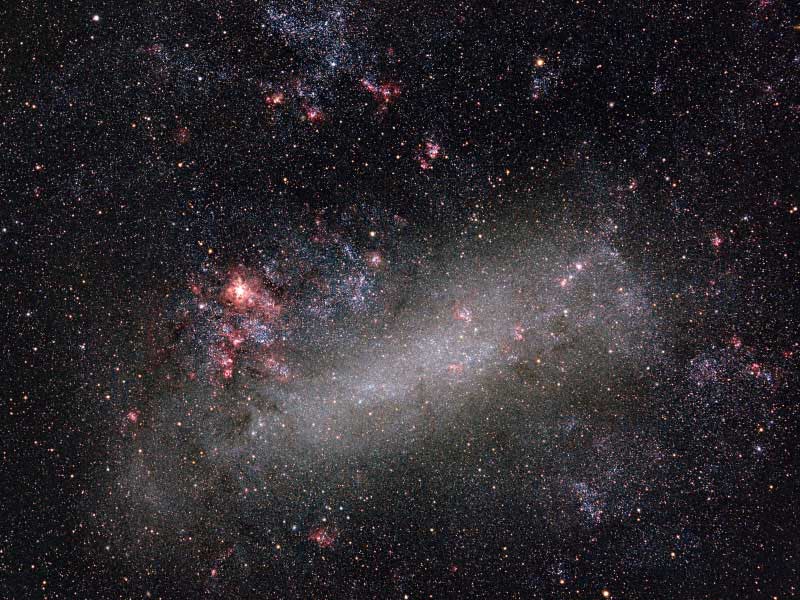
|
Credit & Copyright: Wei-Hao Wang
(IfA, U. Hawaii)
Explanation:
Portuguese navigator
Fernando
de Magellan and his crew had plenty of time to study the
southern sky during the first circumnavigation of planet Earth.
As a result, two fuzzy cloud-like
objects easily visible for southern hemisphere
skygazers are known as the
Clouds of Magellan.
Of course, these star clouds are now understood to be
dwarf irregular galaxies,
satellites of our larger spiral
Milky Way galaxy.
The Large
Magellanic Cloud (LMC)
pictured above is only about 180,000 light-years distant in
the constellation
Dorado.
Spanning about 15,000 light-years or so, it is
the most massive of the
Milky Way's satellite galaxies
and is the site of the
closest
supernova in modern times.
The prominent red knot on the right is 30 Doradus, or the
Tarantula Nebula, a giant star-forming
region in the
Large
Magellanic Cloud.
|
January February March April May June July August September October November December |
| ||||||||||||||||||||||||||||||||||||||||||||||||
NASA Web Site Statements, Warnings, and Disclaimers
NASA Official: Jay Norris. Specific rights apply.
A service of: LHEA at NASA / GSFC
& Michigan Tech. U.
Based on Astronomy Picture
Of the Day
Publications with keywords: LMC - dwarf irregular galaxy
Publications with words: LMC - dwarf irregular galaxy
See also:
